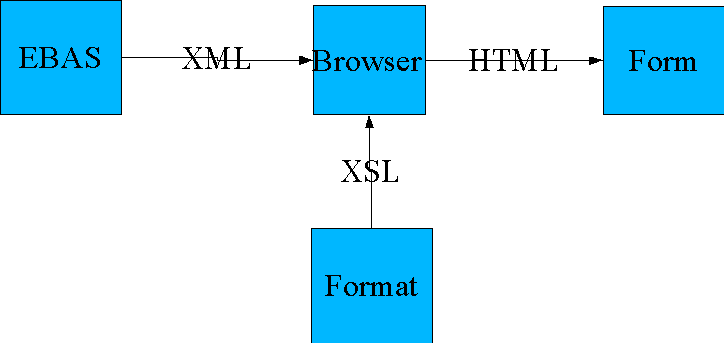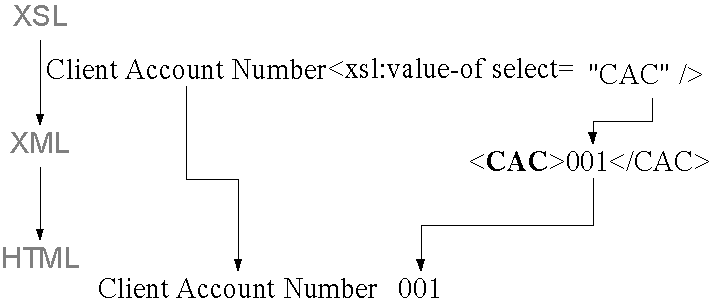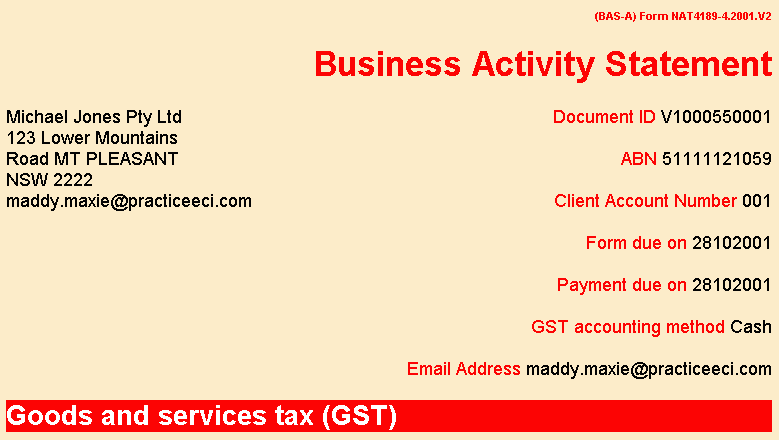This item on "Formatting the eBAS with XSL" is part of the segment on "Metadata and Electronic Document Management for Electronic Commerce" first presented for the Australian National University course "Information Technology in Electronic Commerce" (COMP3410/COMP6341).
This document is intended to provide both for live group presentation and accompanying lecture notes for individual use. The Slides and these notes are provided in the one HTML document, using HTML Slidy.
This is a demonstration of how XML transactions can be transformed into printable documents.
The Australian Taxation Office (ATO) provides specifications of electronic versions of tax forms on their Software Developers Homepage. This includes the Business Activity Statement (BAS) for to the Goods and Services Tax (GST).
ATO provide documentation for accounting software developers to incorporate the interface into their systems. While there are differences between the paper and electronic versions of the forms, it is possible to print out the electronic form in a similar format to the paper one, without the use of accounting software. As well as simplifying the systems needed for e-commerce (particularly small business) printable transactions can make the more acceptable for non-technical people.
The Australian Taxation Office (ATO), provide a Business Portal for submitting XML forms. The user enters their data in an accounting package, which generates an XML file in an ATO specified format. The file can be displayed in a web browser and then submitted to the portal.
The ATO modified their approach to use of XML. Previously the XML format closely related to the fields on the paper form and how they were used. The newer format was a more abstract, and briefer, description of the data.
The ATO's free ECI Client software can be used to create an XML document which is then imported into an accounting package. Alternatively there is a simple command line interface to allow the accounting package to invoke the ECI software.
While the ATO's ECI Client software can be used to print a BAS, this can also be done directly by software which can interpret an XML document.
As an example the Field "CAC" is printed with the caption "Client Account Number ".
To make the result look more like the paper form, styles are used to right justify and colour the text.
The example was created and tested in 2002 with the Microsoft Internet Explorer Version 6 Web Browser. Like other newer versions of web browsers., IE6 has XSLT capabilities built in, so it is not necessary to have a separate software package to run the demonstration. The ATO's example eBAS XML file was modified by adding one line to the header, to instruct the browser to invoke the transformation automatically, to remove the need for manual intervention:
This same file was later loaded into Microsoft Word 2003 Beta 2. MS-Word automatically detected the XSLT entry and provided it as an option. By selecting this option "atobas.xsl" was retrieved from the web, the transformation applied to the data file and the resulting HTML document displayed. The result looks much as it does in MS-IE 6.
Australian Taxation Office staff are members of the OASIS Tax XML Technical Committee, along with the Canada Revenue Agency, German Federal Ministry of the Interior, , Netherlands Tax and Customs Administration, UK H.M. Revenue & Customs, US IRS. This offers the prospect in the future of one standard global format for submitting value added tax (VAT)details electronically:
The ATO are also proposing a Standard Business Reporting model, allowing a single data update for multiple government agencies.




